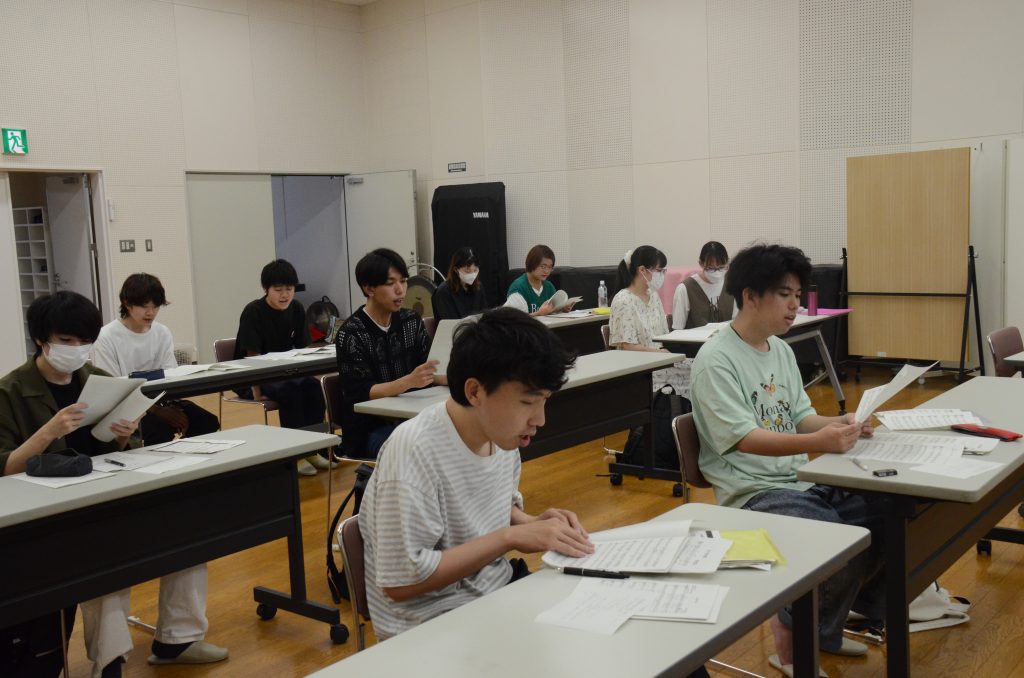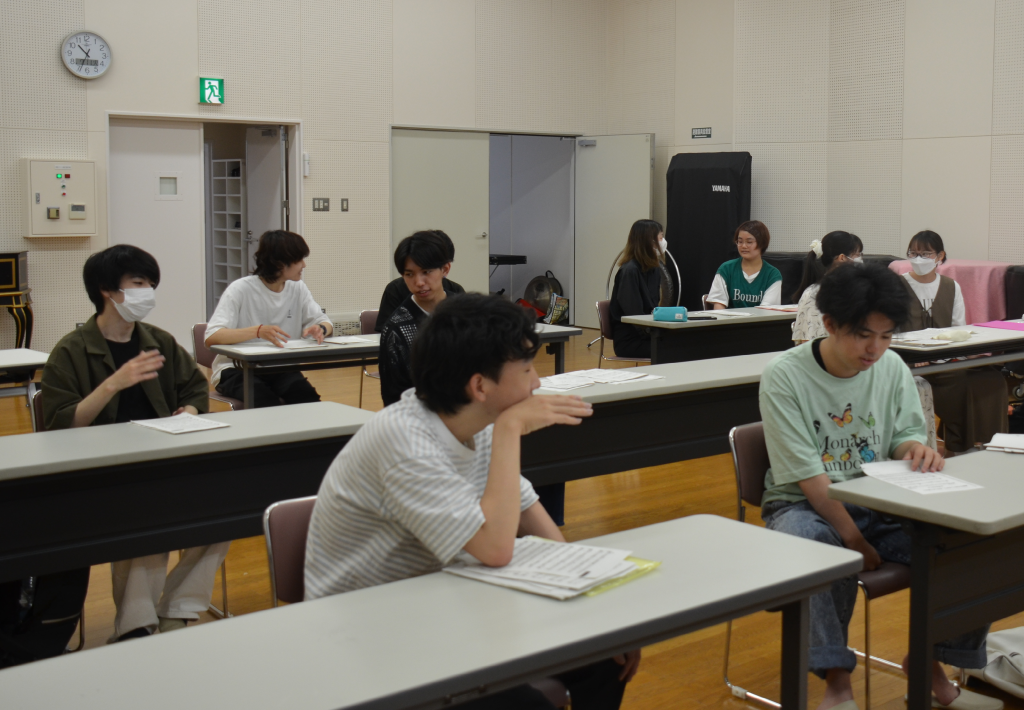The objective of this class is to scientifically interpret the fun of music by considering the relationship between music and numbers such as 1, 2, 3, 4, 5, and 6, and by analyzing the elements of music such as rhythm and harmony as the chorus progresses.
Lesson Content
On the day of the interview, the class was held in a lecture room called the Grand Performance Room. The room has a high ceiling, a stage, and an impressive grand piano lined up on the platform. At the beginning of the class, the teams were confirmed, and as soon as the students of the same team were seated in a row, the teacher called out to them and started to play the piano while the students sang. The songs included “Tsubasa wo Kudasai (Please give me wings),” “Furusato (Hometown),” and “Kimi no onote (Let me carry you),” and the students were divided into high and low part singing in chorus. After singing through the songs, each pair was instructed about vocalization and how to take notes in harmony. The teacher instructed the students by practicing how to vocalize and sing, explaining that breathing techniques are important and that singing the same note by raising the back of the throat and resonating it makes a difference.

In advance of this class, students were asked what words they could think of related to each number from 1 to 8 and to music, and on this day we were discussing “4”.
The teacher explained the fourth degree and the fourth chord, for example, while looking at the results of a survey on quarter notes, quartets, four chords, etc. In the talk on the “fourth degree” and the “increasing fourth degree,” for example, the students were asked to actually play the fourth degree on the piano and to speak it out loud.
The teacher frequently asked students, “What do you want to do? The students sang and consulted in teams and pairs, and everyone communicated with each other.
A presentation was scheduled for the final class session, and at the end of the day, everyone actually sang a few songs to discuss what song to sing for the presentation. Here again, the teacher’s “What do you think? appeared many times, indicating that the students are developing an attitude of independent thinking.

The perspective of expanding the world of music based on numbers is interesting, and the inclusion of a chorus, which is not possible alone, provides an opportunity for students to communicate with each other. The teacher conducts the class in a cheerful and enjoyable atmosphere from start to finish, and students can feel the power of music to enrich their hearts.
Comments from faculty
Through singing with their peers, they communicate and experience the fun of expressing themselves. This is the most key point of this class. I want students to go beyond the corona disaster where they could only sing by themselves and feel the wonder of the harmony of the human singing voice with their own bodies and brains. To this end, we will theoretically consider the interest of music based on its relationship to numbers. Melody, rhythm, harmony, tone (singing voice), etc. are all greatly related to numbers. We will develop the class so that you can look forward to learning about them, so please come and sing. We are delighted to see your faces light up as you sing.
Student Comments
Daichi Tange, 3rd year student, Faculty of Engineering
Think of a song you like.
Is it a happy song? Is it a sad song?
The world of art is a magical world that fascinates people. There are many forms of expression of its beauty. Examples include painting, sculpture, dance, and music.
Of these, “music” is probably the most familiar to us.
Music and “numbers” have an inseparable relationship, such as chords and the way to beat. J-Pop and classical music, which we usually hear in our daily lives, are examples of such music.
If you learn how to get the feelings of lightness, urgency, and frustration from music, you will be able to understand and enjoy music more deeply.
In this class, we learn the deep connection between music and numbers, and are taught how chords work and how to vocalize them, while practicing chorus with our peers. This is the kind of diverse and interesting knowledge that you can gain at university. To all high school students, good luck with your exams.

